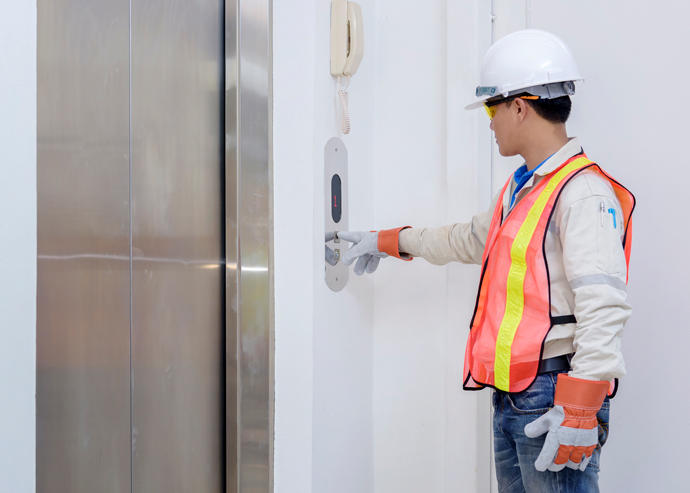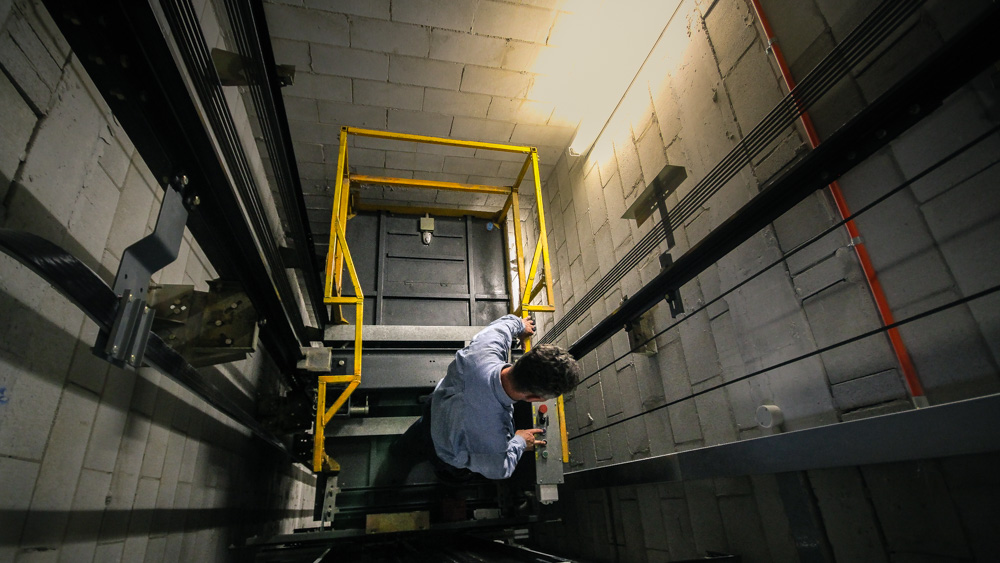Trusted Lift Maintenance Programs to Boost Safety And Security and Capability
Trusted Lift Maintenance Programs to Boost Safety And Security and Capability
Blog Article
Checking Out the Comprehensive Procedures Needed for Lift Upkeep
In the realm of building maintenance, making sure the proper functioning and safety and security of lifts is paramount. The complexity of elevator systems needs a careful strategy to maintenance. From regular examinations to strategic innovation strategies, an all natural view of upkeep is crucial. Nevertheless, in the ever-evolving landscape of lift modern technology and safety requirements, there are detailed steps that have to be diligently followed to guarantee ideal efficiency and conformity. By attending to key aspects such as positive maintenance timetables, safety and security checks, and emergency readiness, an extensive understanding of the intricacies associated with lift maintenance can result in boosted efficiency and security.
Routine Inspections
When it comes to ensuring the longevity and safety and security of your lift system, routine evaluations are extremely important. These regular checks play a vital role in recognizing any type of potential concerns before they escalate into significant troubles, guaranteeing the smooth and risk-free procedure of the lift. By carrying out routine assessments, upkeep groups can proactively address wear and tear, malfunctioning elements, or any kind of various other problems that may compromise the lift's efficiency or safety and security.
Throughout these assessments, trained specialists thoroughly examine numerous aspects of the lift system, consisting of mechanical elements, electric systems, security features, and overall architectural honesty. By identifying and resolving problems early on, these inspections aid stop expensive repairs, downtime, or safety and security dangers, ultimately prolonging the lifespan of the lift system and ensuring the health of its individuals.
Positive Maintenance Schedules
Applying positive upkeep routines is necessary for making the most of the performance and long life of lift systems. By sticking to a positive maintenance approach, lift owners can deal with possible concerns before they intensify right into significant troubles, inevitably decreasing downtime and expensive repair services. Positive upkeep entails normal assessments, lubrication of relocating components, screening safety and security attributes, and changing used parts. These set up upkeep jobs not just aid in preventing break downs however likewise add to preserving the lift's efficiency at ideal levels.
A well-structured positive maintenance timetable need to lay out certain tasks, frequencies, and responsible employees. When developing these timetables to guarantee the lift operates safely and efficiently, it is essential to adhere to maker recommendations and sector requirements. Additionally, recording upkeep activities and maintaining thorough records can offer valuable insights right into the lift's efficiency with time, assisting in identifying fads and making informed upkeep choices.

Security Compliance Checks
Making sure safety and security compliance via complete checks is critical in keeping lift systems' reliability and guarding user health. Safety conformity checks entail an extensive analysis of different parts, including electric systems, mechanical components, emergency brakes, doors, and various other crucial safety and security features. These checks are vital to determine any kind of potential dangers or malfunctions that might compromise the lift's procedure and placed individuals at threat.
Regular safety anonymous and security compliance checks need to be carried out by qualified technicians in adherence to market regulations and requirements. These checks aid in detecting concerns early, enabling timely repairs and preventive maintenance measures to be applied. Moreover, maintaining detailed records of security conformity checks is crucial for tracking the lift system's performance in time and showing conformity with security laws.
Devices Upgrades and Modernization
Enhancing lift systems via tools upgrades and modernization is important for boosting performance and security standards in upright transportation. As modern technology breakthroughs, older lift systems may become obsolete, resulting in lowered dependability and potential safety and security risks. By purchasing tools upgrades and modernization, structure owners can make certain that their lifts satisfy existing market criteria and guidelines.

Along with operational advantages, equipment upgrades and innovation jobs can also improve the aesthetic appeals of the lift, providing an extra appealing and modern-day experience for travelers. Inevitably, purchasing lift upgrades and modernization you could try this out is an aggressive technique towards ensuring the durability, safety and security, and performance of upright transportation systems.
Emergency Situation Preparedness Preparation
An efficient emergency preparedness strategy is important for ensuring the safety and security and swift feedback in case of unforeseen incidents involving lift systems. Emergency situation preparedness planning for lift systems includes a systematic technique to mitigate risks, guarantee traveler safety and security, and minimize downtime during emergencies.
Secret elements of an emergency situation preparedness prepare for lifts consist of clear interaction protocols, normal training for lift drivers on emergency procedures, and routine drills to check the efficiency of the plan. lift maintenance. Furthermore, the plan should outline specific roles and responsibilities for all stakeholders involved, including building management, maintenance personnel, and emergency situation -responders
In the occasion of a lift breakdown or entrapment, having a distinct emergency strategy can aid in working with a punctual and effective feedback to make sure the security and well-being of guests. Prompt communication, accessibility to emergency situation equipment such as interaction tools and emergency informative post situation lighting, and knowledge of discharge procedures are important facets of a detailed emergency preparedness plan for lift systems. By prioritizing emergency situation preparedness preparation, structure managers can enhance the total security and reliability of their lift systems.
Conclusion
Finally, the detailed steps required for lift maintenance include regular examinations, aggressive maintenance timetables, safety and security compliance checks, tools upgrades and modernization, and emergency situation preparedness preparation. These procedures are essential for guaranteeing the safety, integrity, and efficiency of lifts in different setups. By executing these actions, lift owners can decrease the risk of mishaps, expand the lifespan of their devices, and abide by industry guidelines.

Throughout these examinations, trained experts extensively examine various elements of the lift system, consisting of mechanical elements, electric systems, safety and security attributes, and overall structural stability.Making sure safety and security conformity through extensive checks is vital in keeping lift systems' integrity and safeguarding user well-being. Keeping comprehensive documents of security conformity checks is vital for tracking the lift system's efficiency over time and showing conformity with safety and security regulations.
By prioritizing emergency situation readiness preparation, structure supervisors can improve the general security and dependability of their lift systems.
Report this page